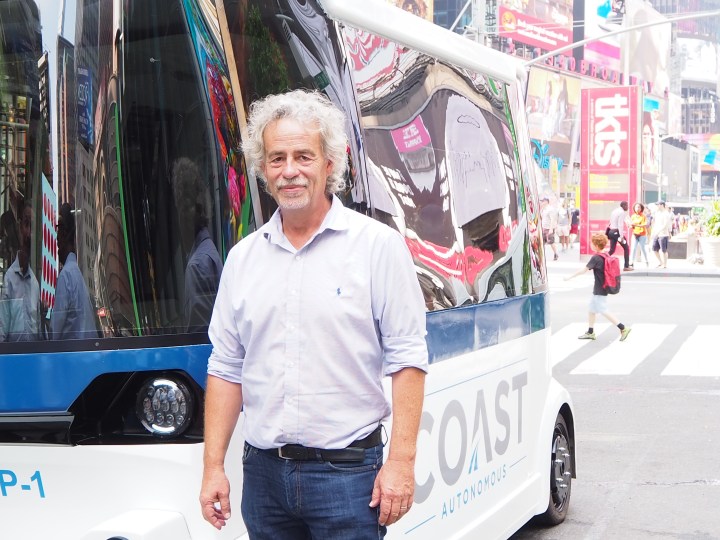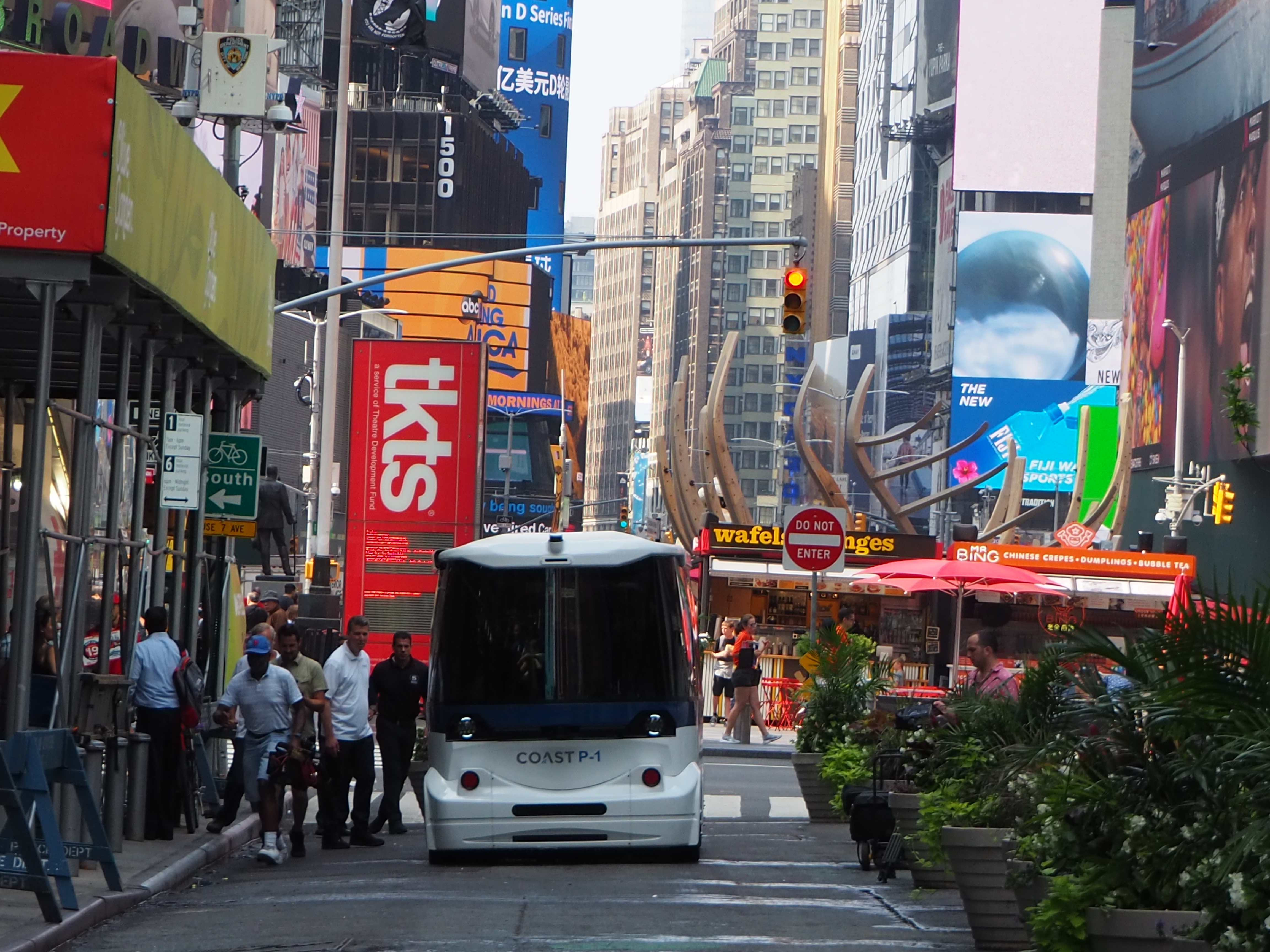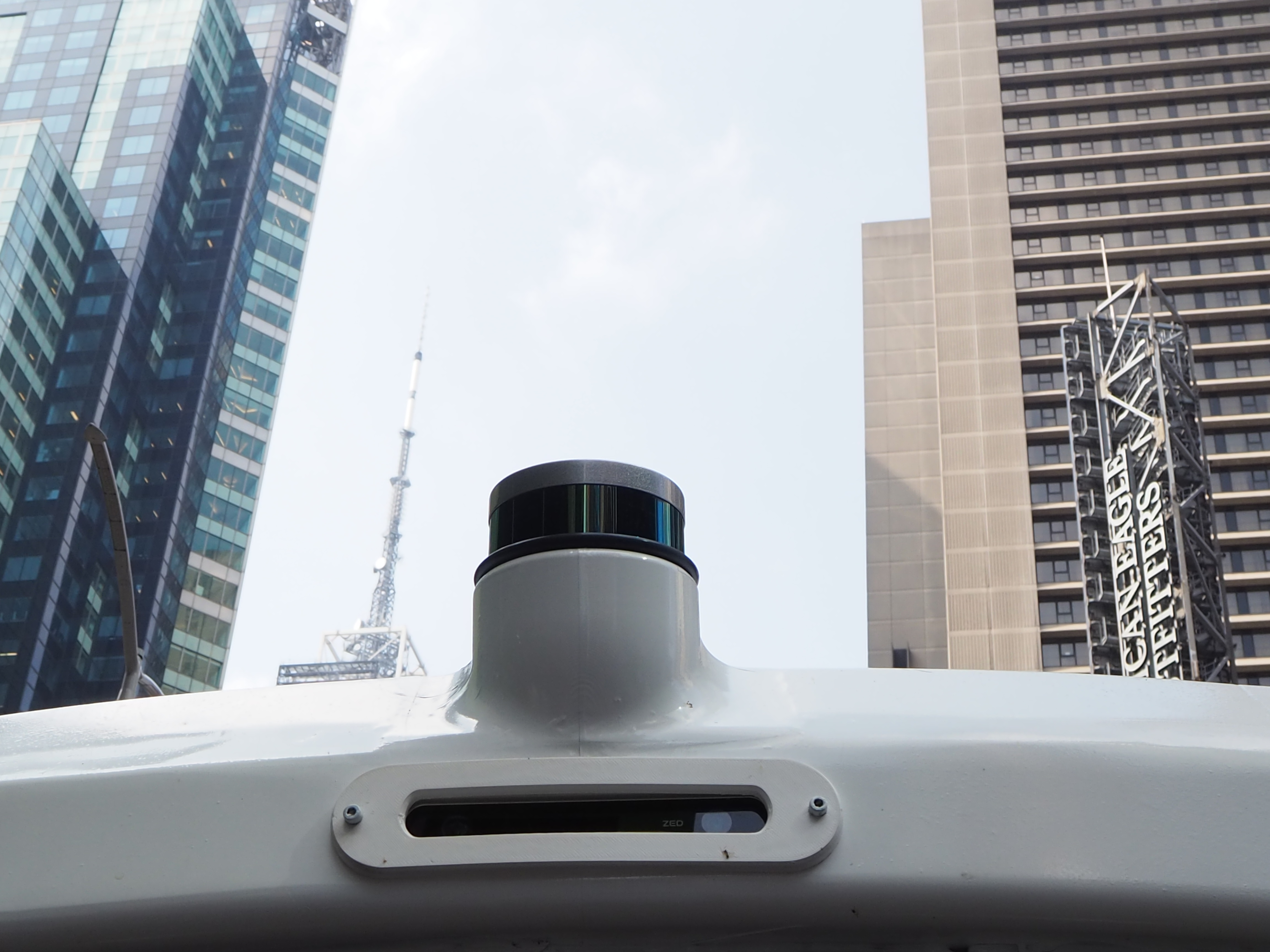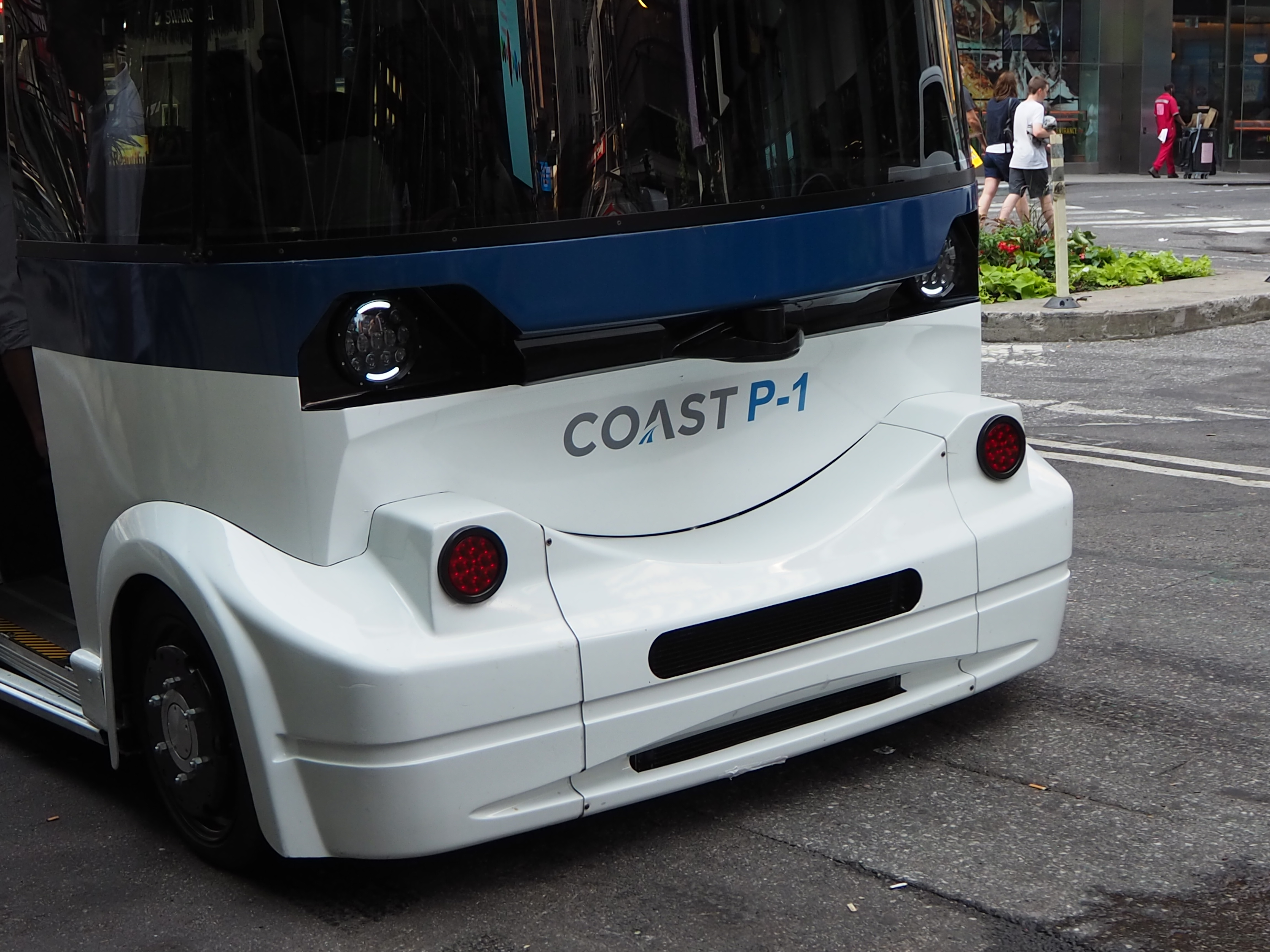
There’s an extra bus cruising through the heart of Times Square this morning – but there’s no one behind the wheel of this vehicle. It doesn’t even have a wheel.
Coast Autonomous, a new entry in the crowded self-driving vehicle market, kicked off a day of demonstrations on Broadway in New York’s crowded Times Square, a symbolic location meant to demonstrate the company’s confidence in its technology. While Coast is only a year old, it has been working on the tech for 15 years, Chief Technology Officer Pierre Lefèvre told Digital Trends.
Indeed, Coast’s tech is behind Navya, the company whose self-driving buses power Keolis vans that have been shuttling folks up and down the Las Vegas strip. And occasionally having minor fender-benders.
Coast’s first vehicle, called the P-1 Shuttle, is a bi-directional van that looks normal from the outside. Inside, it’s basically a bathtub on wheels, with no seats for a driver or passengers and no space for a driver at all. Instead, the interior is just a ring of seats at the windows that circles the cabin, and a space for a door. One wall has a built-in screen for displaying information to passengers; during our demo, it showed diagnostics from onboard computers and lines of code on the status of CAN network components and onboard elements such as oMotorTorque and oParkingBrake. One imagines ride info and ads being posted up there in the future, of course.
Lefèvre said the van’s wheelbase was shorter than Navya’s offering, yet had more room for passengers. It appeared able to hold 10 to 12 passengers comfortably, as long as some riders skipped the seats and stood in the main cabin. With fewer seats, the company claims it can hold up to 20.
Electric motors in the wheel hubs move the P-1 along predefined routes, making the vehicle run quietly and smoothly. In a brief demo on a sweaty Tuesday morning, the vehicle cruised up and down Broadway inaudibly and stopped smoothly – crucial, because it lacks safety gear such as seat belts and grab rails. Lefèvre said the goal is to maximize comfort for passengers, so rather than optimize for speed, it’s optimized to slow down smoothly. And since passengers don’t waste time strapping themselves in, the shuttle shaves precious seconds from picking up and dropping people off.
The Coast Autonomous vehicle is designed to operate in low-speed, mixed-traffic environments. It’s optimized for 10 to 15 mph speeds, though it can go up to 20, using a GPS map for navigation. It relies on a pair of LIDAR sensors at front and rear to map out the road ahead and avoid obstacles.
“We are convinced that the deployment of driverless vehicles in low-speed environments, like our P-1 Shuttle and autonomous golf cart, are much closer to commercialization than self-driving vehicles designed to travel at highway speeds,” said Adrian Sussmann, Coast’s managing director, in a press release about the NYC event. “This is mainly because operating at low speeds is much safer, requires less sensors, and is therefore much more cost effective. We are already seeing significant interest and expect to deploy our first fleets in 2019.”
Editors' Recommendations
- Volkswagen is launching its own self-driving car testing program in the U.S.
- How a big blue van from 1986 paved the way for self-driving cars
- Tesla pulls latest Full Self-Driving beta less than a day after release
- Watch San Franciscans take a ride in Waymo’s self-driving car
- Tesla issues stark warning to drivers using its Full Self-Driving mode





